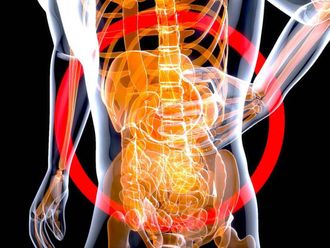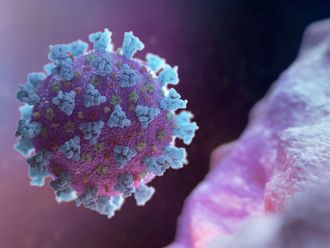
We exercise and eat in hope that the fat-burning zone exists and that it is not a myth. It certainly sounds plausible, when you apply science and physiology, that by maximising our metabolism through diet, the times you eat and the right exercise, we burn fat.
Naturally, we store fat for survival and we do it very efficiently. Due to our ancestors’ active lives as hunter-gatherers, energy expenditure was high and their diet was low in agricultural grains and higher in root vegetables, seeds, leaves and protein.
Today’s diet is predominantly plant-based foods from agriculture and these tend to exceed our requirement for immediate energy. We quickly turn calories into fat and channel it into fat storage. Once fat is stored, it is very difficult to shift as insulin — triggered by carbohydrate foods, stress and other stimulants — stops lipolysis, which is the breakdown of fat for fuel. Eating from dawn until dusk provides a steady stream of glucose, which has gravely influenced health, insulin resistance and weight over the decades.
There are solutions, aside from starvation, to tap into fat stores as well as to use the fat consumed in our diet. One highly researched area is performing the correct type of exercise, which doesn’t actually use fat as energy during the event but in the hours afterwards as your body restores itself. Assuming your metabolism is in good order, and you apply some diet principles as well as regulate the times you eat, it can have a big impact.
There are three possible food sources of energy during physical training: carbs, fat and protein. Glucose is the first substrate to be used, while fat is the muscle-preferred substrate but can only be activated at a low working intensity such as walking or to replace energy in the hours after exercise when you are restoring balance at an easy pace, including sleep. Protein is rarely used unless as a last resort.
Exercise and diet work well together and are in fact mostly influenced by our genetics. From your genes, it’s possible to assess what type of exercise is best for your biology as well as the food molecules your body thrives on. That means that if your genes don’t function efficiently down some pathways, you may not process specific foods well and your metabolism won’t work efficiently during certain exercise cycles.
Ramping up intensity
With exercise, the usual rule of thumb is to increase the intensity of your workouts to boost your heart rate. Workouts such as high-intensity interval training (HIIT), circuit training and RPM are good options to put you in the fat-burning zone post exercise. Basically any workout that is high-intensity for short periods of time works well but if you have any existing health conditions you need to speak to an exercise expert and your doctor before undertaking such activities. During HIIT workouts, fat is not used as energy as it cannot be converted into fuel at this intensity. However, during recovery in the hours afterwards, the body has a prime opportunity to mobilise and use fat as long as you don’t take in glucose. This is termed the fat-burning zone. It’s a bit like lighting a fire where you get lots of heat and activity from fast-burning wood and
paper, until the slow burning coal and hard wood kicks in but the activity is slower and longer.
Training at a high level of intensity forces your body to draw on calories from carbs for energy. While working out at a low level of intensity, energy efficiency is not so critical and your body will draw on a higher percentage of fat calories for fuel.
Unfortunately, low-intensity training burns very little fat, which doesn’t overly benefit weight loss as fewer calories are used up overall but it does keep bones and muscles working. High-intensity exercise burns the largest number of calories.
Diet takes the lead when it comes to managing fat and will also allow you to get into a fat-burning zone. Simply put, it is the fast-and-feast protocol, where you manage meal timings to maximise the hormonal benefits of regulating the intake of calories. Typically fasting for 16 hours of the day and eating over eight hours is one way. Alternatively, you can refrain from eating some foods during the 16 hours, such as carbohydrates, to allow lipolysis to kick in while you are operating at a low intensity, during normal activity and sleep, allowing you to burn fat.
Periods of fasting isn’t about skipping the occasional meal but establishing a routine that gets your metabolic hormones into a rhythm. The body doesn’t deal with sudden stress and disruption too well, which is why we suffer when we do something drastic before our body gets trained or accustomed to it. Appetite and fat-burning hormones, leptin and ghrelin like order and regular triggers, which fit in with night and day, light and dark, asleep and awake, and eating and fasting. If this is established, the body regularly detoxes, works to boost the immune system, manages stressful times during the day with ease and encourages fat-burning, which it is designed to thrive on for sustainable energy.
Defining fasting
Fasting can mean to refrain from all food, to eat sparingly or avoiding particular food groups such as carbohydrates for a period.
Fasting also sets in motion a hormonal chain of events, releasing a surge of human growth hormone, which is more active at night. It does not thrive on fluctuations in blood sugar and therefore a large carb meal is better timed during the early part of the day. Carb timing impacts many aspects of burning fat and if it is limited in the evening or the last part of the eight-hour eating period, you will tend to eat less.
Depending on your unique situation, the fasting period may need to be less. The aim of eating in the evening is to boost endorphins, which manage serotonin and dopamine, aid a relaxed sleep and fuel the next morning’s energy needs. Taking the first meal around midday to include carbs, a later carb and protein snack at 4pm and the last meal with less carbs at 8pm is a perfect timing. To maximise the benefits of fasting, you shouldn’t graze or consume fast food.
Fasting isn’t about restricting, but creating a longer period between eating to allow for fat to be utilised and with growth hormone, muscle to be preserved. It signals to the body to start functioning, scavenging, cleansing, recycling and restoring. If followed correctly our bodies try desperately to achieve homeostasis and good health.











